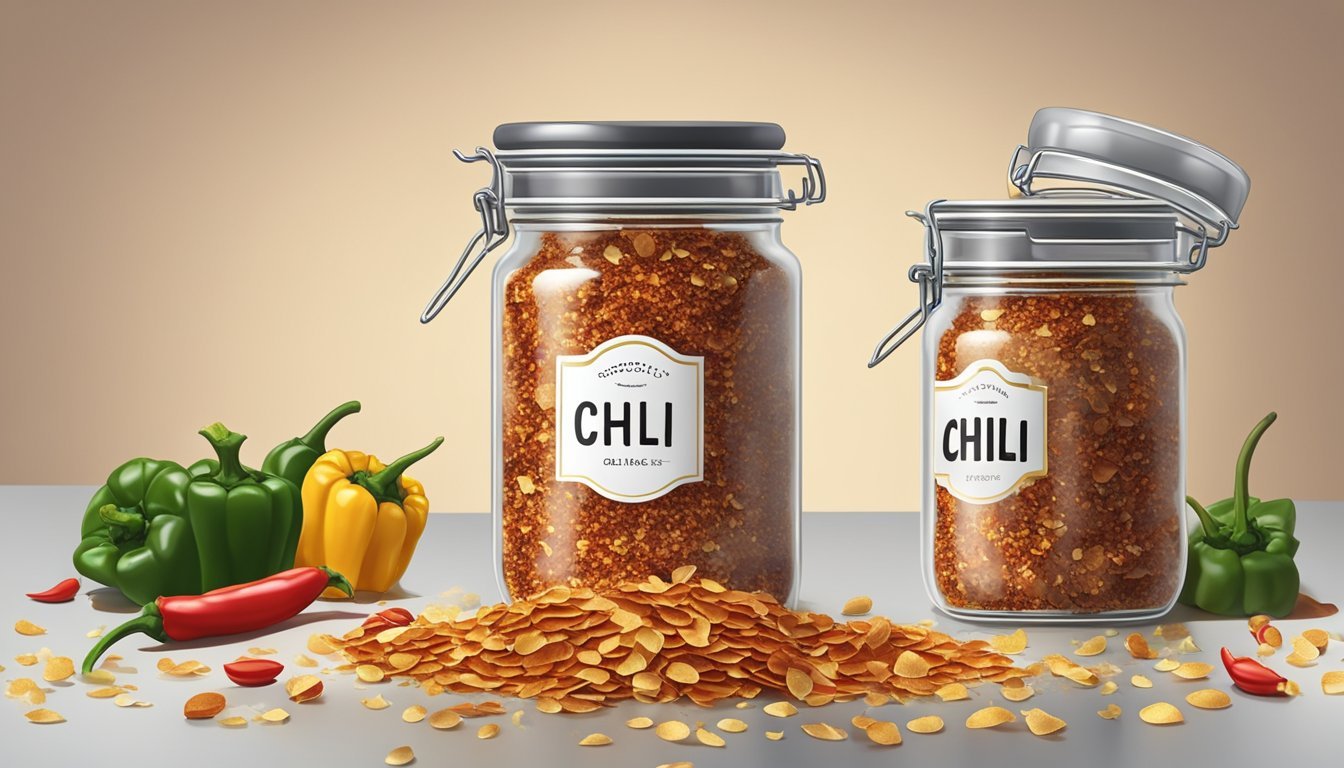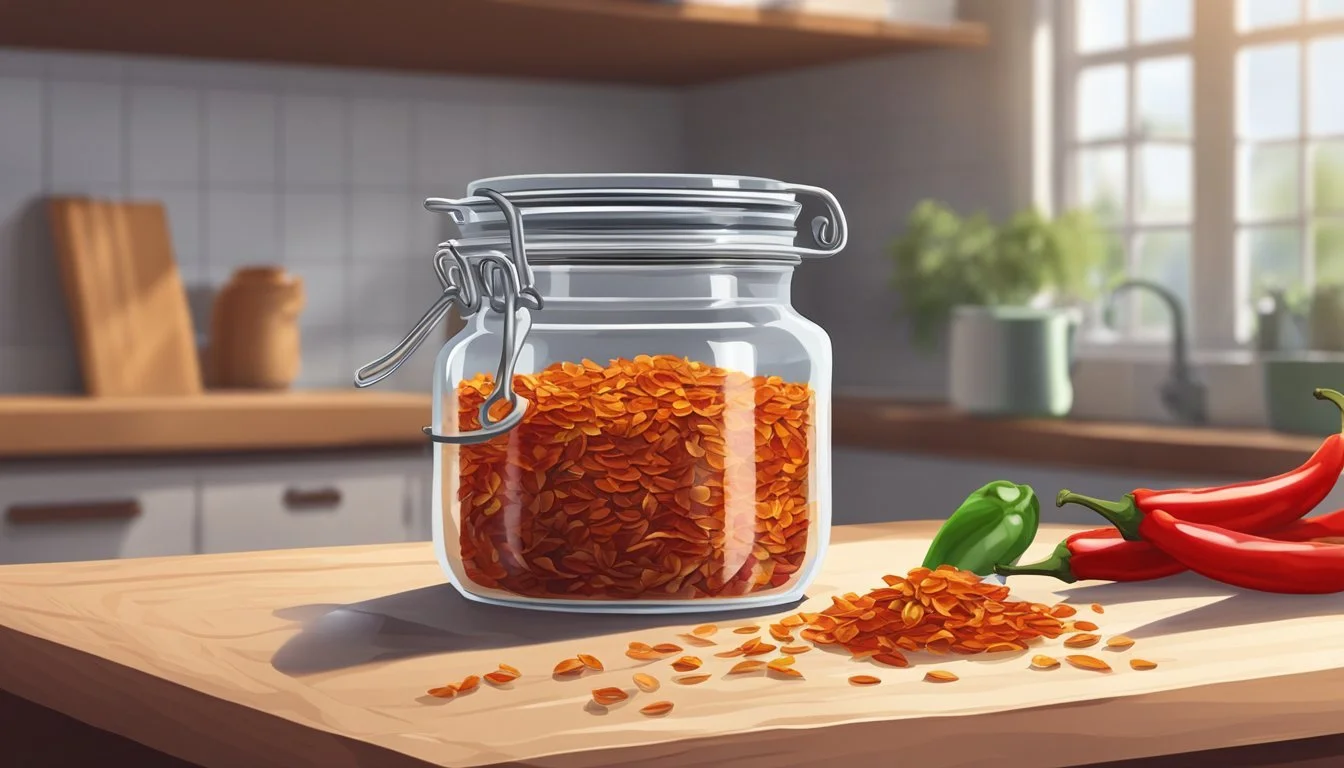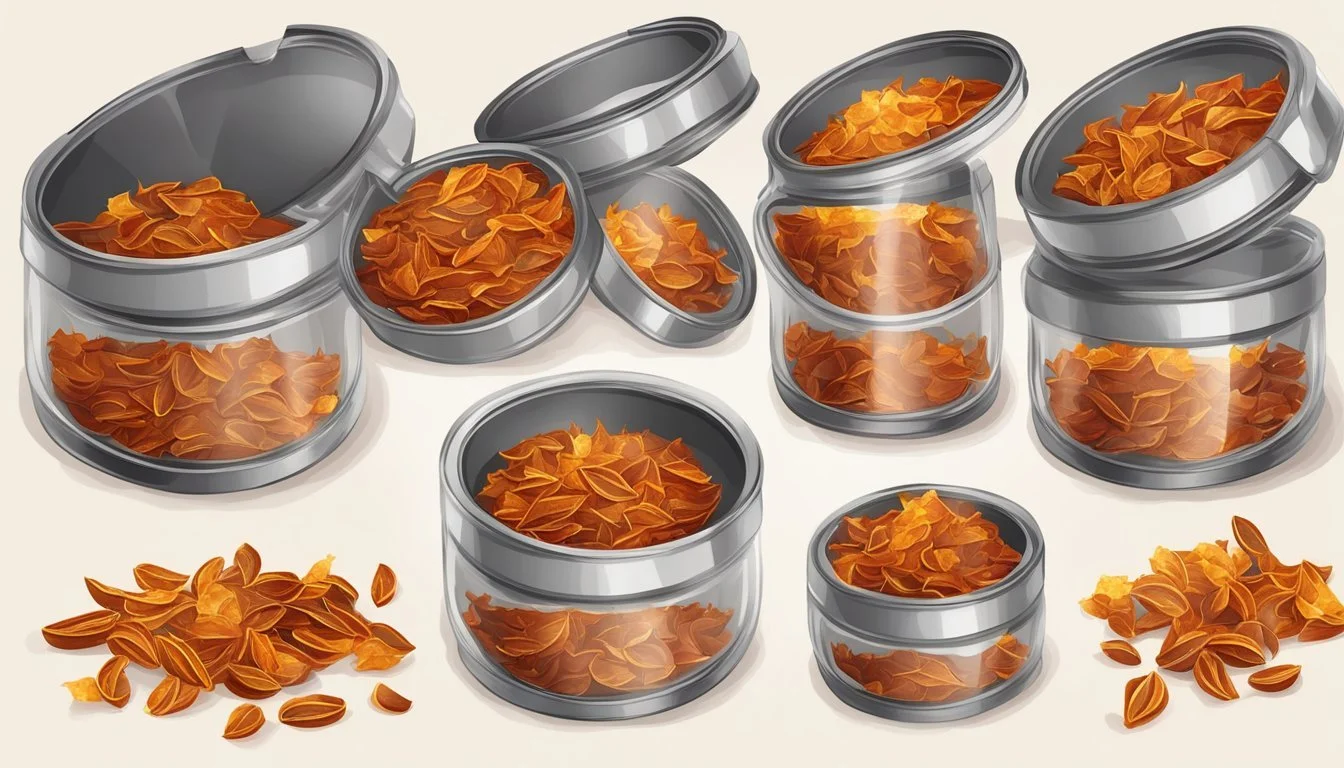Does Chili Flakes Go Bad?
Shelf Life and Storage Tips
Chili flakes, a staple in many kitchens, are beloved for their ability to add a spicy kick to numerous dishes. Yet, there’s a common question among spice enthusiasts: do chili flakes go bad? The short answer is yes. While they won’t spoil in the traditional sense of becoming harmful to consume, they can lose their flavor, potency, and aroma over time.
The shelf life of chili flakes primarily depends on how they are stored. Proper storage in a cool, dark place and in airtight containers can help maintain their quality. When exposed to moisture, however, chili flakes may develop mold, making them unusable.
Like many other spices, chili flakes benefit from being kept dry and away from light to maximize their shelf life. Purchasing high-quality chili flakes and storing them correctly ensures that your spices remain vibrant and flavorful for as long as possible.
Understanding Chili Flakes
Chili flakes, also known as crushed red pepper, are a versatile spice made from dried and crushed chili peppers. They are used extensively in global cuisines for their heat and flavor.
Origin and Varieties
Chili flakes have historical roots that span continents, including Asia and Europe. Various types of chili peppers like cayenne, jalapeño, and Urfa Biber are used to produce an array of chili flakes, each bringing unique flavors and heat levels.
Common Varieties:
Cayenne Pepper Flakes: Bright red, very spicy.
Urfa Biber: Dark reddish-purple, smoky and rich.
Ring of Fire: Red concentric rings, used as garnishes.
The diversity in chili flakes allows for a range of culinary applications.
Flavor Profile
The flavor of chili flakes is primarily characterized by its spiciness. The level of heat varies significantly depending on the type of chili pepper used.
For example, cayenne pepper flakes are typically very hot. In contrast, Urfa Biber flakes are milder but offer a smoky, slightly fruity flavor.
This variability makes chili flakes suitable for different taste preferences and dishes.
Flavor Notes:
Spicy: Predominant in most chili flakes.
Smoky: Found in certain varieties like Urfa Biber.
Fruity: Present in some artisanal types.
Composition and Culinary Uses
Chili flakes are made by drying chili peppers and then crushing them into small pieces. This process often retains the seeds, contributing to their heat.
Composition Details:
Main Ingredient: Dried chili peppers
Color: Varies from bright red to deep purple
Texture: Coarse, with visible seeds
In cooking, chili flakes are a staple in dishes like pasta, stews, soups, and marinades. They are often added to recipes to enhance heat and complexity.
Culinary Applications:
Italian Cuisine: Often sprinkled on pizzas and pastas
Mexican Cuisine: Used in traditional sauces and spice rubs
Everyday Cooking: Incorporate into chili, stews, and marinades
The unique flavor and heat of chili flakes make them a beloved spice in kitchens worldwide, enriching a variety of dishes with their fiery touch.
Factors Influencing Shelf Life
Various factors play a crucial role in determining the shelf life of chili flakes. These elements include exposure to moisture and mold growth, heat and light exposure, and the type of container used for storage.
Moisture and Mold Growth
Moisture is one of the primary factors that can cause chili flakes to go bad. When chili flakes are exposed to moisture, it creates an ideal environment for mold and bacteria to flourish.
This not only degrades their quality but also poses health risks. Proper storage in a cool, dry place is essential to prevent moisture infiltration. Desiccant packets can also be used to keep the environment dry, thereby extending the lifespan of the chili flakes.
Heat and Light Exposure
Chili flakes should be kept away from heat and direct light. Both heat and light can accelerate the breakdown of essential oils in the chili flakes, making them lose their piquancy and aroma faster.
Prolonged exposure to light can particularly cause spices to fade and their flavors to weaken. Storing them in a pantry or a closed cabinet, away from kitchen appliances that generate heat, helps in preserving their quality.
Air and Container Type
The type of container used for storing chili flakes significantly impacts their shelf life. Air-tight containers are the best as they minimize exposure to air, which can carry moisture and contaminants.
Glass containers with tight lids are preferable over plastic as they do not transfer odors and are less permeable to air. Tin containers can also be effective but should be checked regularly for rust or corrosion. Proper sealing is crucial to keeping chili flakes fresh for longer.
Optimal Storage Solutions
Preserving the quality and flavor of chili flakes requires specific storage methods. This includes selecting appropriate containers, suitable locations, and considering the potential impact of freezing.
Best Practices for Storage
Chili flakes should be stored in an airtight container to prevent exposure to moisture and air. Exposure can lead to loss of flavor and potency.
Keep chili flakes in a cool, dark, and dry place. A pantry or a cupboard away from direct sunlight and heat sources is ideal. Avoid storing in humid areas such as above a stove.
Inspect the chili flakes regularly for any signs of mold or discoloration. These could indicate that the storage conditions are not optimal.
Container and Location Choices
Choosing the right container is crucial. Airtight glass or plastic containers with tight-fitting lids work best for maintaining the freshness of chili flakes.
Place these containers in a cabinet, cupboard, or drawer that is not frequently opened, as frequent exposure to air can degrade the quality of the spices.
A closed spice rack can also be effective if it is placed in a cool and dark location. Ensure that the storage area remains dry, and avoid areas that are prone to temperature fluctuations.
Effects of Freezing on Shelf Life
Freezing chili flakes can extend their shelf life. This method slows down the degradation of flavor and spice quality.
Place the chili flakes in a freezer-safe, airtight container to prevent freezer burn and moisture exposure. Label the container with the date of storage.
Though freezing is effective, it’s important to seal the container properly each time to prevent the introduction of condensation. This ensures the chili flakes remain as fresh as possible when defrosted.
Avoid refreezing thawed chili flakes, as this can lead to further moisture issues and loss of flavor.
Maintaining and Reviving Flavor
Chili flakes can lose their potency over time, but there are methods to enhance their seasoning power and revitalize their flavor. Proper storage and creative usage are key to maintaining the savory and sweet undertones.
Enhancing Potency Through Usage
Using chili flakes effectively involves incorporating them into dishes in ways that maximize their flavor impact. Toasting chili flakes lightly in a dry pan can elevate their potency and release essential oils, making them more aromatic. This process should be done quickly to prevent burning.
Adding ground spices like chili flakes during the cooking process, rather than after, helps to infuse dishes with a deep, consistent heat. Combining chili flakes with other ingredients at the start of cooking allows the flavors to meld together, enriching the overall taste.
Frequent use of fresh containers for storage also helps in maintaining the potency, preventing exposure to moisture and air, which can degrade the flavor.
Revitalizing Methods
To revive older chili flakes, consider a few specific techniques. One effective method is briefly toasting the flakes. This simple step can rejuvenate their aromatic qualities and enhance their flavor.
Another technique is to grind the chili flakes into a finer powder, which can intensify their impact when used as a seasoning. Grinding exposes more surface area, making the flavor more pronounced.
Storing chili flakes in airtight containers away from light and heat also contributes significantly to maintaining their potency. The right storage environment helps preserve both savory and sweet elements of the seasoning, ensuring a longer shelf life.
Lifecycle of Chili Flakes
The lifecycle of chili flakes begins with drying and grinding, eventually reaching a point where they may lose their potency or flavor. Understanding how to manage their expiration and storage can maximize their usability.
From Drying to Grinding
Chili flakes start as fresh chili peppers. The drying process is crucial as it removes moisture, which helps in preserving the chilies. Drying can be done naturally under the sun or using dehydrators.
Once dried, the chilies are ground into small, coarse pieces. This grinding exposes more surface area, allowing the potent compounds to release their flavor.
Grinding chili peppers creates the familiar red flakes, known for their intense spice and flavor. These compounds provide the heat, making chili flakes a popular addition to many dishes. Proper drying and grinding are vital to maintaining their quality over time.
Keeping Track of Expiration
While chili flakes do not technically expire, their potency can diminish. Stored in a cool, dark place, they can remain usable for up to three years.
Exposure to light, heat, and moisture can speed up the degradation process. Airtight containers are ideal to prevent moisture absorption, which can cause mold.
Using chili flakes within one to three years ensures the best flavor. Marking containers with the date of purchase can help track their age. Although they may not spoil, their effectiveness in cooking can decrease, making regular checks important.
Proper storage practices can extend the lifecycle of chili flakes, maintaining their vibrant color and fiery taste.
Health Benefits and Considerations
Chili flakes offer various health benefits, including antioxidant and anti-inflammatory properties. They can enhance diet when consumed in moderation.
Antioxidant and Anti-Inflammatory Properties
Chili flakes, derived from dried and crushed red peppers, contain compounds such as capsaicin. Capsaicin is known for its antioxidant and anti-inflammatory abilities.
Antioxidants in chili flakes neutralize harmful free radicals, potentially reducing the risk of chronic diseases. They also contain vitamin C, which bolsters the immune system.
The anti-inflammatory properties help in reducing pain and inflammation. Regular consumption may alleviate conditions like arthritis and muscle soreness.
Dietary Incorporation and Considerations
Incorporating chili flakes into one's diet can provide warmth and flavor, enhancing various dishes. They can be sprinkled on pizzas, salads, and soups.
Moderation is key as excessive consumption might cause gastrointestinal discomfort. Individuals with sensitive stomachs or certain health conditions should consult a doctor before increasing their intake.
Daily Recommended Intake: It is advisable to start with small amounts to gauge tolerance. Balancing chili flakes with other food ingredients can enhance their health benefits while minimizing potential risks to the digestive system.
When to Replace Chili Flakes
Chili flakes can maintain their potency for a long time but there are distinct signs that indicate when they should be replaced to ensure optimal flavor and quality in your dishes.
Signs of Degradation
Loss of Color: When chili flakes start losing their vibrant red color, this is a clear sign of degradation. Fresh chili flakes should have a bright red hue.
Change in Aroma: Fresh chili flakes have a distinctive, spicy aroma. If the scent becomes faint or musty, it indicates a decline in quality.
Texture: Chili flakes should be dry and crumbly. If they become clumpy or exhibit moisture, this can signal potential mold growth.
Presence of Mold: Any sign of mold growth, such as visible spores or a change in texture to something more sticky or wet, means the flakes should be discarded immediately to avoid foodborne illnesses.
Recommended Replacement Timeline
Shelf Life: Generally, chili flakes maintain their flavor and potency for up to 1-2 years if stored properly in an airtight container away from light and moisture.
Usage Frequency: For those who use chili flakes frequently, replacement every 1-2 years ensures the best flavor and heat level.
Storage Conditions: Poor storage conditions can reduce shelf life. If your kitchen is humid or the container is not sealed properly, consider replacing the flakes every 6-12 months.
Potency Check: To check potency, crush a few flakes and smell them. If the aroma is weak, it's time to replace them.
Paying attention to these signs and timelines ensures that your chili flakes enhance your culinary creations with maximum flavor and heat.
Comparing Chili Flakes with Similar Spices
Chili flakes are a versatile spice with unique characteristics. When compared to similar spices, each brings a different flavor profile and usage.
Chili Powder and Paprika
Chili powder consists of ground dried chili peppers mixed with other spices like garlic powder and cumin.
Paprika, on the other hand, is made from ground sweet red peppers and has varying heat levels, from sweet to hot.
Heat Levels: Chili flakes are usually hotter than chili powder. Paprika can be mild, medium, or hot.
Texture: Chili flakes are coarser. Chili powder and paprika have a fine, powdery texture.
Usage: Chili flakes are often used as a topping. Chili powder and paprika blend seamlessly into dishes, imparting an even flavor and color.
Note: Despite similarities, they are not always interchangeable due to these characteristics.
Other Spices and Herbs
Red pepper flakes are similar to chili flakes but can be slightly hotter. Both add visual and flavor accents to dishes.
Cumin offers a warm, earthy flavor, making it a key ingredient in many spice blends.
Basil and oregano are dried herbs with a sweet, herbal profile, often used in Italian and Mediterranean cuisines.
Ginger and allspice provide unique taste profiles. Ginger adds a zesty, spicy flavor, while allspice combines cinnamon, nutmeg, and clove flavors.
Comparing these, chili flakes stand out for their heat and bold flavor, contrasting with the milder, aromatic profiles of many dried herbs and spices.
Integration in Global Cuisines
Chili flakes have found their way into a variety of cuisines around the world. Their versatility and ability to enhance flavors have made them a popular spice in many traditional and contemporary dishes.
Chili Flakes in Different Cultures
Chili flakes are famously used in Italian cuisine, where they add a spicy touch to dishes like pasta arrabbiata and pizza. In Mexican cooking, chili flakes are infused into sauces and marinades, bringing heat to salsas and mole.
In Asian cuisines, particularly in Korean and Chinese cooking, chili flakes are essential for dishes such as kimchi and mapo tofu. The versatility of chili flakes allows them to be used in various ways, from garnishing to cooking through stews and stir-fries.
Pairing with Ingredients
Chili flakes pair well with both savory and sweet ingredients. They complement garlic and olive oil in many Mediterranean dishes, enhancing the overall flavor profile. In Mexican cuisine, they are often combined with lime and cilantro, creating a vibrant and zesty taste.
Certain fruits, such as mango and pineapple, also benefit from a sprinkle of chili flakes, adding a surprising yet delightful heat. Additionally, in fusion cooking, chefs combine chili flakes with unconventional ingredients like maple syrup or dark chocolate, achieving a balance between sweet and spicy nuances.








